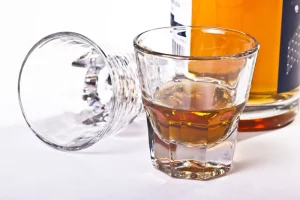The Real Consequences of Drunk Driving

More than half the respondents thought it would be at least somewhat likely that they would be stopped by the police if they drove after having too much to drink. However, 38 percent of respondents believed it would be at least somewhat likely that if they drove after drinking too much they would be stopped by the police, arrested, and convicted. Only 2 percent believed it would be almost certain that all three of these things would happen. Among people who drove after drinking, males reported more drinking–driving trips in the past month than females (an average of 13.2 trips vs. 6.6 trips). Drivers ages 16 to 20 who drove after drinking reported on average the fewest drinking–driving trips of any age group (Royal 2000). In 1999, researchers conducted a nationwide, random telephone survey of 5,733 adults age 16 and older to collect information about drinking and driving behavior and attitudes, and enforcement of drinking and driving laws (Royal 2000).
The effects of alcohol dosing on driving performance on a closed course and in a driving simulator
If you are convicted of driving under the influence, part of your sentence will include paying a fine. All states have laws setting minimum and maximum fines for drunk driving, but those penalties can be enhanced by other circumstances. It’s pretty common for people to experience depression and anxiety after a first-time DUI. But getting a DUI may result in a host of emotions—including sadness, anger, guilt, and shame.
- But getting a DUI may result in a host of emotions—including sadness, anger, guilt, and shame.
- In 2002, 42 percent of intoxicated drivers (i.e., those with BACs of 0.08 percent or higher) in fatal crashes were speeding, as were 43 percent of drivers with BACs of 0.15 percent or higher.
- States differ in what they call it — driving under the influence, driving while intoxicated, drunk driving or impaired driving — but in general, a baseline blood alcohol concentration (BAC) of .08 grams per deciliter (g/dL) or higher is considered alcohol-impaired.
- In some states, if you refuse to take the field sobriety test or submit to a breathalyzer or blood test, your driver’s license is suspended immediately, even before you go to court.
What Happens When You Get a DUI
Although a smaller percentage of 16- to 20-year-old drivers drive after drinking compared with older drivers, when they do so, 16- to 20-year-olds consume more alcohol before driving. Compounding the danger of driving with higher BACs, drivers ages 16 to 20 on average have 1.4 passengers with them when they drive after drinking, compared with an average of 0.79 passengers for all other age groups. Young drivers’ perceptions about how much they can drink and still drive safely also increase their risk. Among 16- to 20-year-olds, the average BAC at which these drivers considered themselves safe to drive was 0.12 percent for males and 0.07 percent for females (based on respondents’ estimates of how much they could drink in a 2-hour period and still drive safely).

Make some solid personal rules regarding drinking and driving

Impaired perception makes it challenging to accurately judge distance and speed. Excess alcohol use can also impair nutrient absorption in the small intestine and increase the risk of malnutrition. The authors declare that they have no known competing financial interests or personal relationships consequences of drinking and driving that could have appeared to influence the work reported in this paper. We’ll be able to tell you if your insurance provider is in network with an American Addiction Centers treatment facility. Usually, you will be required to carry this type of auto insurance for a period of three years.
For example, a BAC of 0.10 percent—a level at which it is illegal to drive in the United States—is the equivalent of 0.10 grams of alcohol per 100 milliliters of blood. This translates, by weight, to a proportion of just under 1 gram of alcohol for every 1,000 grams of blood in the body (Jones and Pounder 1998). If someone drives drunk and survives a crash that injures or kills other people, they must live with the consequences. That emotional burden can be worse than any bodily harm; however, the physical perils of drunk driving are immense too. Impaired driving can cause accidents that lead to paralysis, disfigurement, brain damage, and death. In 2022, 5,934 people operating a motorcycle were killed in traffic crashes.

- Among 16- to 20-year-olds, the average BAC at which these drivers considered themselves safe to drive was 0.12 percent for males and 0.07 percent for females (based on respondents’ estimates of how much they could drink in a 2-hour period and still drive safely).
- Over 30% of motor vehicle traffic fatalities were caused by alcohol-impaired driving, resulting in 10,874 lives lost and $44 billion costs incurred in 2017 alone (Naimi et al., 2018; National Highway Traffic Safety Administration, 2018).
- Over 10,000 people die each year in the U.S. from alcohol-related car crashes.
- In many cases, individuals are required to report these offenses on job applications and for other purposes, such as when applying to the military, applying to certain colleges, etc.
For some drivers, it feels humiliating to have to appear in public to answer charges of driving drunk. Traffic crashes are more likely to result in death or injury if alcohol is involved. Of all alcohol-related https://ecosoberhouse.com/ crashes in 2002, 4 percent resulted in a death, and 42 percent in an injury. In contrast, of the crashes that did not involve alcohol, 0.6 percent resulted in a death, and 31 percent in an injury.